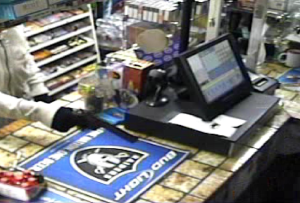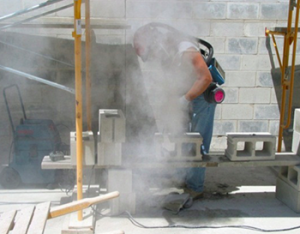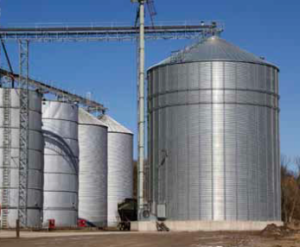
(KTVN News 2)
Data presented by the Occupational Safety and Health Administration (OSHA) suggests that late-night retail establishments, such as convenience stores, gas stations, and liquor stores, are subject to high homicide and assault rates. OSHA aims to reduce these statistics through violence prevention programs, management and employee involvement, hazard prevention and control, and safety training.
OSHA’s findings and prevention strategies, highlighted below, will help to protect both employees and patrons and deter crime in late-night retail environments:
Risk Factors
A number of factors put late-night retail workers at risk. These include:
- The exchange of money (making them targets for robbery);
- Solo work and isolated work sites;
- The sale of alcohol;
- Poorly lit stores and parking areas; and
- Lack of staff training in recognizing and managing escalating hostile and aggressive behavior.
Violence Prevention Programs
Violence prevention programs should set clear goals and objectives to prevent workplace violence. The goals and objectives must be suitable for the size and complexity of workplace operations. In addition, the program should be adaptable to different situations at the worksite. Whatever format the program takes, it is critical that employers clearly explain the prevention program to all workers.
At a minimum, workplace violence prevention programs should:
- Establish a clear policy for workplace violence, verbal and nonverbal threats and related actions. All personnel employed in the retail establishment should know the policy.
- Ensure that no worker who reports or experiences workplace violence faces reprisals.5
- Encourage workers to promptly report incidents and suggest ways to reduce or eliminate risks. Require records of incidents to assess risk and measure progress.
- Outline a comprehensive plan for maintaining security in the workplace. The plan should include establishing a liaison with law enforcement representatives and others who can help identify ways to prevent and mitigate workplace violence.
- Assign responsibility and authority for the pro- gram to individuals or teams with appropriate training and skills. Ensure that adequate resources are available and that those responsible for the program develop expertise on work- place violence prevention in late-night retail settings.
- Affirm management commitment to an environment that places as much importance on worker safety and health as on serving store patrons.
Hazard Prevention and Control
By effectively preventing and controlling workplace violence hazards, employers are better able to protect workers and avoid workplace incidents. After hazards are identified through the systematic worksite analysis, employers will need to take steps to prevent or control those hazards….
Engineering controls remove the hazard from the workplace or create a barrier between the worker and the hazard….For example, employers should:
- Integrate violence prevention activities into daily procedures, such as checking lighting, locks, and security cameras to help maintain a secure worksite.
- Require workers to use the drop safes and keep a minimal amount of cash in each register.
- Develop and implement procedures for the cor- rect use of physical barriers, such as enclosures and pass-through windows.
- Establish a policy of when doors should be locked. Require workers to keep doors locked before and after official business hours. Require workers to lock doors used for deliveries and garbage removal when not in use. In addition, require that deliveries be made during normal daytime operations.
- Develop and implement emergency procedures for workers to use in case of a robbery or security breach – such as calling the police or triggering an alarm.
Administrative and work practice controls, independent of engineering controls include:
- Prohibit transactions with large bills (over $20). If this is not practical because of frequent trans- actions over $20, cash levels should be kept as low as practical. Workers should not carry business receipts on their persons unless it is absolutely necessary.
- When possible, increase staffing levels at stores with a history of robbery or assaults, or located in high crime areas. Use the “buddy system,” especially when personal safety may be threatened.
- Establish rules and practices to ensure that workers can walk to garbage areas and outdoor storage areas without increasing their risk of assault.
- Establish liaison with local police and state prosecutors. Report all incidents of violence. Give police physical layouts of facilities to expedite investigations.
- Require workers to report all assaults or threats to a supervisor or manager (for example, through a confidential interview). Keep log books and reports of such incidents to help determine any necessary actions to prevent recurrences.
- Advise workers of company procedures for requesting police assistance or filing charges when assaulted if necessary.
- Provide management support during emergen- cies. Respond promptly to all complaints.
- Set up a trained response team to respond to emergencies.
- Use properly trained security officers to deal with aggressive behavior. Follow written security procedures.
- Discourage workers from wearing necklaces or chains to help prevent possible strangulation in confrontational situations.
- Provide staff members with security escorts to parking areas in evening or late hours. Ensure that parking areas are highly visible, well lit and safely accessible to the building.
Click here to view the full OSHA report.
We Fight for Victims of Workplace Violence and Retail Security Negligence in Georgia…Contact us Now for a Free Consultation.
The Murray Law Firm has recovered millions of dollars for victims of workplace violence and retail security negligence in Georgia, and we offer our legal assistance if desired. We represent our Clients on a contingency agreement, which generally means that no fees or payments are owed until and unless we recover. Anyone seeking further information or legal representation is encouraged to contact us via e-mail (click here) or by telephone at 888.842.1616. Consultations are free and confidential.
Choosing the Right Attorney
Selecting the right attorney for you or your family is highly important. You must feel confident that the attorney you hire has a complete understanding of the law applicable to your particular case, and has successful experience in handling such cases.
Important: Do not hire a lawyer who has violated the Rules of Professional Conduct!!!
You should not hire an attorney who calls you or visits you unsolicited, or anyone that contacts you directly to offer legal services. This activity is strictly prohibited by Rule 7.3 of the American Bar Association (ABA) Model Rules of Professional Conduct, which states as follows:
 A LAWYER “SHALL NOT” CONTACT A PROSPECTIVE CLIENT THROUGH A “LIVE TELEPHONE” OR AN “IN-PERSON” VISIT.
A LAWYER “SHALL NOT” CONTACT A PROSPECTIVE CLIENT THROUGH A “LIVE TELEPHONE” OR AN “IN-PERSON” VISIT.
– RULE 7.3, ABA MODEL RULES OF PROFESSIONAL CONDUCT.
If an attorney, or someone acting on behalf of an attorney, contacts you in this manner, that attorney is in violation of this Rule. This unethical and unprofessional activity on the part of the lawyer is good sign that you should stay away. It is imperative that you are represented by an attorney who is capable of advocating for you within the confines of the law, and an attorney who fails to abide by the Rules of Professional Conduct is probably not the best fit. In fact, any such attorney should be immediately reported to the local State Bar Association. If you have been contacted in such an unsolicited manner, contact us and we’ll assist you in filing a report.

Contingency Fees Disclaimer: “Contingent attorneys’ fees refers only to those fees charged by attorneys for their legal services. Such fees are not permitted in all types of cases. Court costs and other additional expenses of legal action usually must be paid by the client.”
 Georgia Legal Report
Georgia Legal Report




 The Murray Law Firm has recovered millions of dollars for victims of unsafe workplaces in Georgia, and recently obtained a $29.25 million dollar verdict for one of our Clients in Fulton County State Court.
The Murray Law Firm has recovered millions of dollars for victims of unsafe workplaces in Georgia, and recently obtained a $29.25 million dollar verdict for one of our Clients in Fulton County State Court.
 The Murray Law Firm has recovered millions of dollars for victims of unsafe workplaces in Georgia, and recently obtained a $29.25 million dollar verdict for one of our Clients in Fulton County State Court.
The Murray Law Firm has recovered millions of dollars for victims of unsafe workplaces in Georgia, and recently obtained a $29.25 million dollar verdict for one of our Clients in Fulton County State Court.